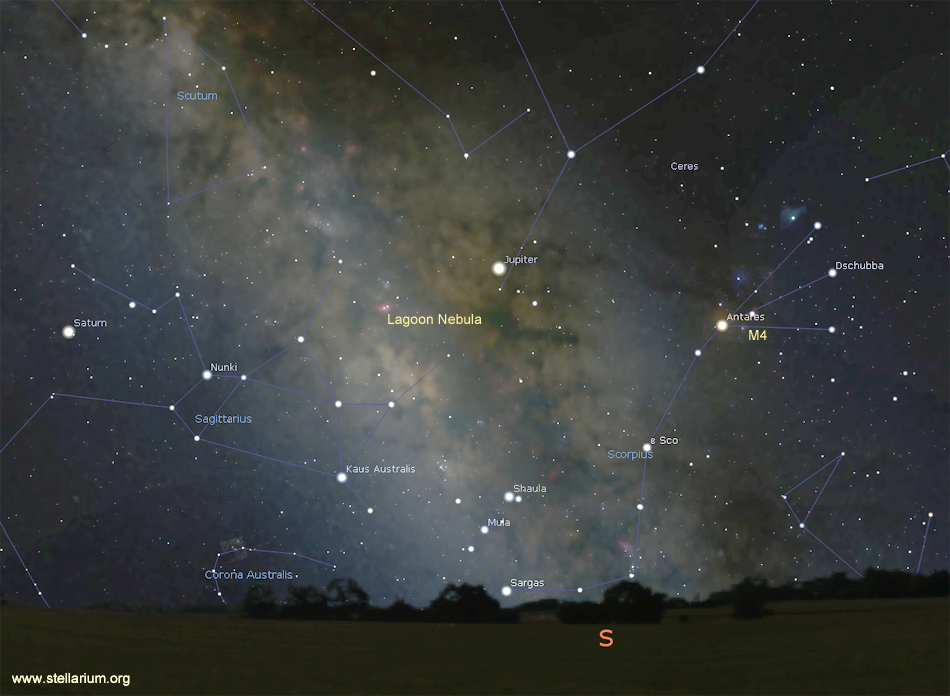Eta Aquarid Meteor Shower
The month of May month begins with the May 4 new moon and will provide dark sky conditions to enjoy the annual Eta Aquarid meteor shower. The entire shower takes place from April 19 to May 28 with the peak occurring on the morning of May 5. The parent comet 1P/Halley which also produces the Orionid meteor shower in October will produce about 40 meteors per hour and vapourize in the atmosphere at 67 km/sec.
While watching meteors dart across the sky, you can welcome Scorpius as it rises before midnight local time in the south. Seeing the familiar arc of three stars along with the red star Antares is a sure sign warmer nights are ahead. Antares is a massive red giant star located 550 light-years (ly) from us. It is about 700 times the diameter of the sun and would fit in the orbit of Mars.
A great project for astrophotographers is the Rho Ophiuchi cloud complex which includes Antares. With simple binoculars, look for the globular cluster M4 located 1.3 degrees west of Antares. M4 is an estimated 7,200 ly away, about 75 ly in width and glows at magnitude 5.6.

Wedged between Scorpius and Sagittarius is brilliant Jupiter. Rising early each week, Jupiter will attain opposition on June 10 thus being closest to earth. A telescope will help reveal the nightly orbit changes of its four Galilean moons. Refer to page 233 of the 2019 RASC Observer’s Handbook for a complete ephemeris of moon transits and accompanying shadow across the Jovian surface.
By 5 a.m. local time, the familiar asterism of the “teapot” is well above the horizon by 3 a.m. with the entire Milky Way painted across the sky to the constellation Cassiopeia. This is Sagittarius and positioned to its left is Saturn. A few degrees above the spout of the teapot is the Lagoon Nebula – M8. This emission nebula commonly called a stellar nursery is slowly forming new stars M8 is seen naked eye on a clear moonless night in the countryside and measures a couple of full moons in width.
On the night of May 10, the 39% lit moon will pass in front of the Beehive cluster – M44. The moon’s motion causes it to move a lunar width in one hour. Starting around 10 p.m. eastern, follow the moon with a telescope as it hides the brighter members of the cluster.
Until next month, clear skies everyone.
